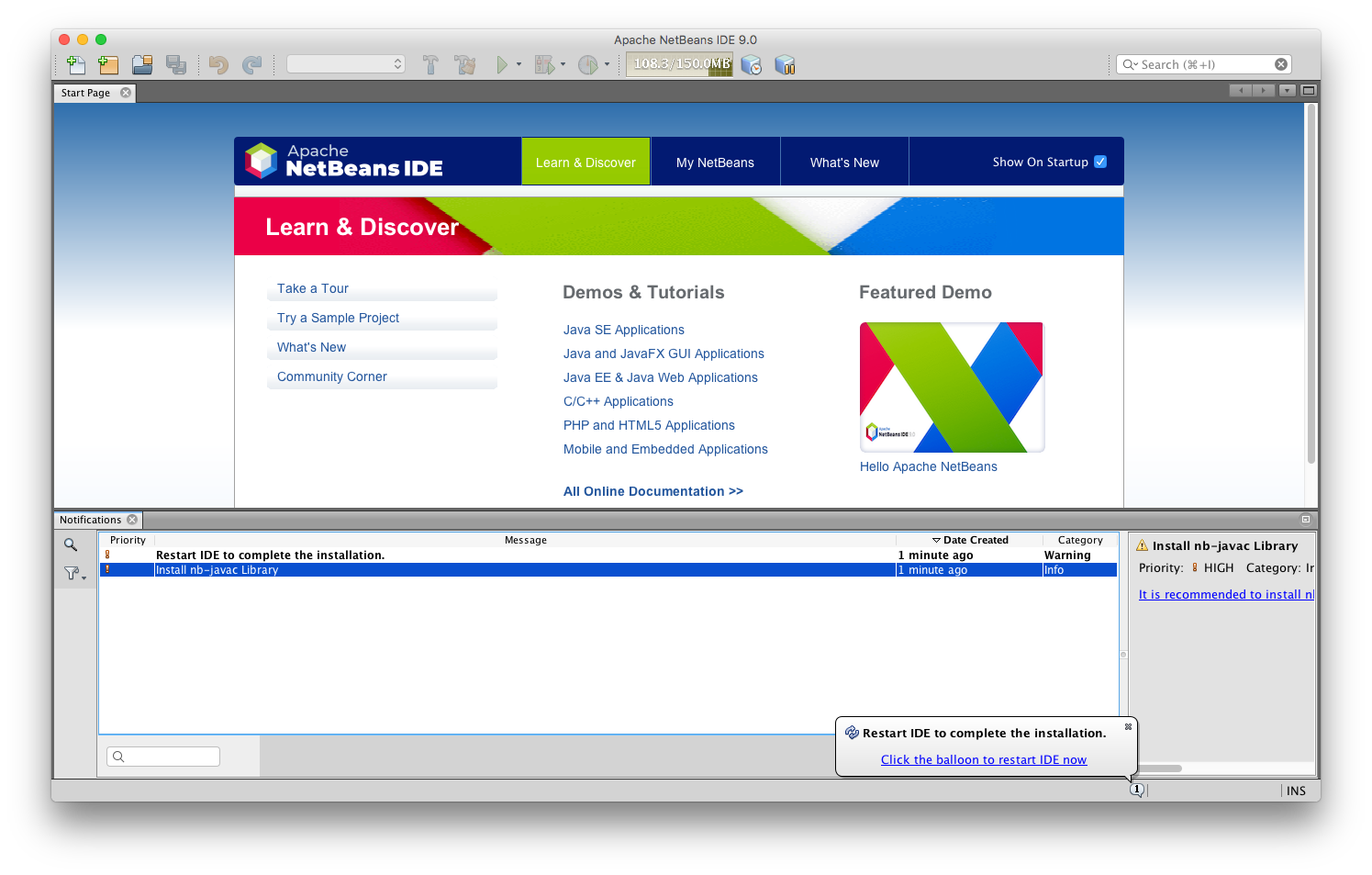
- #DOWNLOAD NETBEANS JDK 9 HOW TO#
- #DOWNLOAD NETBEANS JDK 9 INSTALL#
- #DOWNLOAD NETBEANS JDK 9 MANUAL#
- #DOWNLOAD NETBEANS JDK 9 FULL#
- #DOWNLOAD NETBEANS JDK 9 CODE#
Meeting the Drupal PHP standards is important for any developer. There are numerous development tools that are suggest on this page. Local development toolsĭeveloping Drupal websites locally needs services that emulate copies of a website for a developer to make the needed changes before deploying to production.
#DOWNLOAD NETBEANS JDK 9 CODE#
When you have finished these steps, the code formatting will be just as required by the Drupal Coding Standards.

#DOWNLOAD NETBEANS JDK 9 INSTALL#
Note: Windows users see to set up Netbeans, Xdebug, Drupal Dev Tools and Templates with Windows 7/XP and Acquia Dev Desktop (This reference is obsolete and not needed for later versions of Netbeans) Netbeans Installationĭownload and Install Apache Netbeans for your system. By default Netbeans supports PHP, you can verify the PHP plugin is activate by navigating to the Tools > Plugins menu item, then choose the Installed tab, and activate the PHP plugin, if it's not already. Supports GIT, SVN and Mecurial version control systems out of the box.Code templates available for Drupal hooks for Drupal 7.Provides autocompletion with hint support for functions and classes project-wide, including Drupal core (provided core is in your project directory.Character encoding of files can be UTF-8 by default.It recognizes Drupal specific file extensions (.info.

Allows you to format your code according to Drupal Coding Standards.In addition to its speed and refactoring capabilities, it offers the following: We will keep the code simple: package Īnd finally, in the hello.modules root directory, add in our module descriptor module-info.java: module hello.Apache NetBeans is an Open Source, platform-independent, Java-based integrated development environment (IDE) which supports a wide variety of languages, like PHP by default. Next, create a new class called HelloModules.java in this package. In our case, we are going to create one package structure: Under our new module, we can create the packages we want.

We can even use the name of our main package as the module name if we want, but usually, we want to stick to the same name we would use to create a JAR of this module. We can name this anything we want but follow package naming rules (i.e., periods to separate words, etc.). Under the simple-modules directory, create a new directory called hello.modules. Now that we have the basic structure in place, let's add our first module. illegal-access=permit|warn|deny – Either relax strong encapsulation by showing a single global warning, shows every warning, or fails with errors.patch-module – Add or override classes in a modules.

#DOWNLOAD NETBEANS JDK 9 FULL#
We'll be using the command line for our full example down below to help solidify how the entire system works in our minds.
#DOWNLOAD NETBEANS JDK 9 HOW TO#
However, it's still valuable to know how to use the module system from the command line.
#DOWNLOAD NETBEANS JDK 9 MANUAL#
By now, support for Java 9 modules has been added to Maven and Gradle, so you won't need to do a lot of manual building of your projects.


 0 kommentar(er)
0 kommentar(er)
